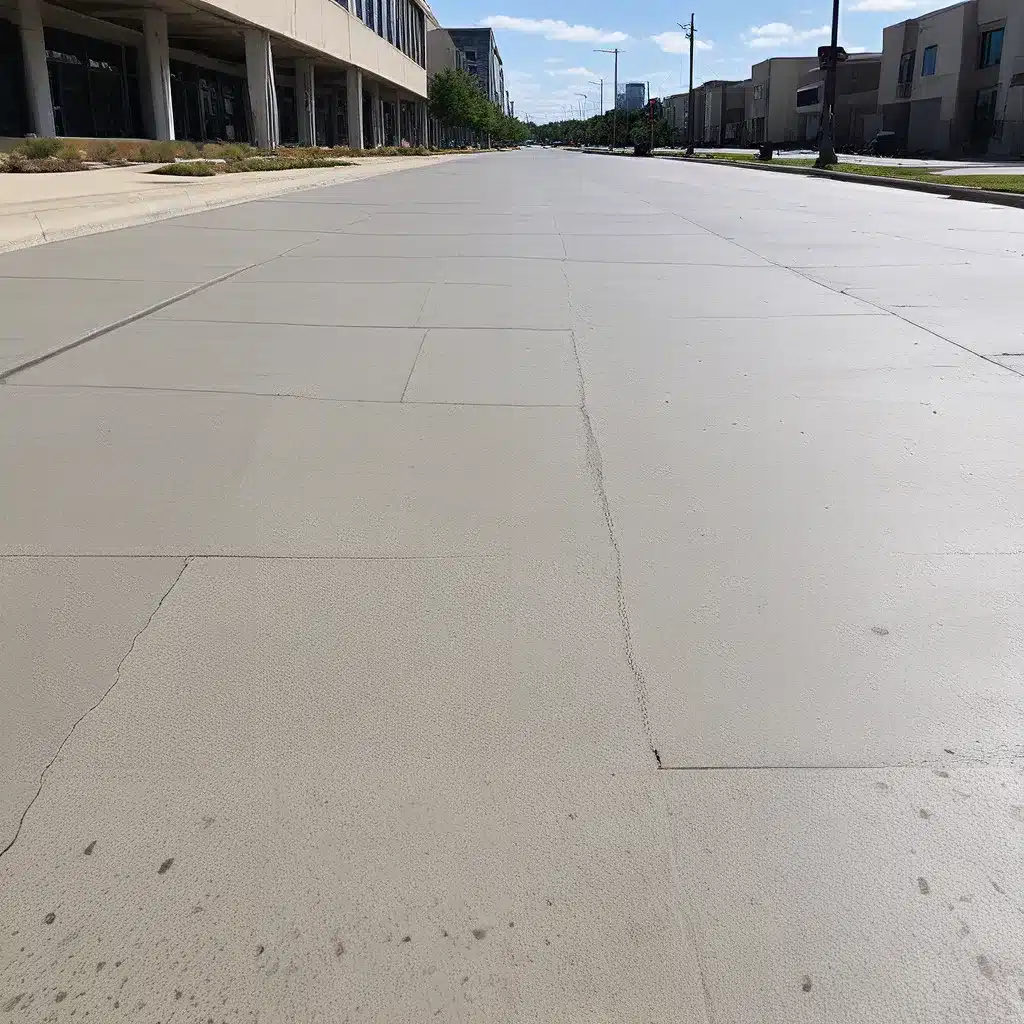
In a city like Columbus, Ohio, where the climate can be harsh, with extreme temperature fluctuations and heavy precipitation, maintaining the integrity of concrete infrastructure is of paramount importance. Concrete repair and resurfacing services play a crucial role in preserving the long-term viability of roads, sidewalks, and other essential structures that are the backbone of the community.
The Importance of Concrete Sealing
Concrete sealing is a preventative maintenance strategy that helps protect concrete surfaces from the damaging effects of weathering, wear and tear, and exposure to chemicals or other environmental factors. By applying a specialized sealant, the concrete’s porous surface is effectively coated, creating a barrier that prevents water, salt, and other contaminants from penetrating and causing deterioration.
Concrete sealing is particularly beneficial in the Columbus area, where the climate can be quite harsh. The city experiences significant temperature fluctuations, ranging from bitterly cold winters to hot, humid summers. This cyclic freeze-thaw cycle can wreak havoc on concrete, causing it to crack, spall, and crumble over time. By sealing the concrete, these damaging effects can be mitigated, extending the lifespan of the infrastructure and reducing the need for costly repairs.
Moreover, the use of de-icing salts during the winter months can also contribute to the deterioration of concrete. The salt can penetrate the surface, leading to the formation of cracks and the corrosion of any reinforcing steel within the concrete. Sealing the concrete creates a protective barrier that helps prevent this type of damage, ensuring the safety and longevity of the city’s infrastructure.
Concrete Repair and Resurfacing: Restoring Columbus’ Roads and Sidewalks
While sealing is an essential preventative measure, there are times when concrete repair and resurfacing services are necessary to address existing issues. Concrete resurfacing, for example, involves replacing the top layer of asphalt pavement, addressing problems like potholes, cracking, and uneven surfaces.
Resurfacing projects are commonly undertaken by municipal authorities in Columbus, as they provide a cost-effective, short-term solution to maintaining the quality of existing roads and sidewalks. These projects typically take less than a month to complete and can significantly improve the overall condition of the concrete infrastructure.
However, more extensive concrete repair may be required in cases where the underlying structure has sustained significant damage. This can involve full-depth reconstruction, which replaces over a foot of the roadway below the surface, as well as addressing issues with the curbs, sidewalks, and underground utilities. These capital street reconstruction projects are essential for keeping the city’s infrastructure in a state of good repair and enhancing the overall quality of life for residents and businesses.
Leveraging Sustainable Concrete Repair Practices
As the city of Columbus continues to invest in the maintenance and improvement of its concrete infrastructure, it is crucial to prioritize sustainable practices that minimize the environmental impact of these projects. One such approach is the recycling of paving materials removed during routine resurfacing operations.
By incorporating these reclaimed materials into new paving mixes, the city can reduce the demand for virgin resources, lower its carbon footprint, and contribute to a more circular economy. This aligns with the city’s commitment to sustainability and its efforts to create a more livable, environmentally-conscious urban environment.
Navigating the Challenges of Concrete Repair in Columbus
While the benefits of concrete repair and sealing are clear, there can be logistical challenges associated with these projects, particularly in urban areas like Columbus. Traffic volumes during the day can make it difficult to close roads without significantly impacting the community, and the presence of both residential and commercial properties can complicate the planning and execution of street work.
To address these challenges, the city of Columbus has adopted strategies to minimize disruption, such as prioritizing night work where possible, as it can be completed two to three times faster than daytime operations. This not only reduces the overall impact on the community but also results in cost savings and increased productivity.
Additionally, the city requires contractors to provide clear signage at work locations, including project details and contact information, to better inform the public about the duration and progress of the projects. This level of transparency helps to manage the expectations of residents and businesses, ensuring that they are aware of the temporary inconveniences and can plan accordingly.
Partnering with Trusted Concrete Repair Professionals
When it comes to maintaining the integrity of Columbus’ concrete infrastructure, homeowners, property managers, and municipal authorities can benefit from partnering with experienced concrete repair professionals. These experts can provide comprehensive solutions, from preventative sealing to full-scale reconstruction, tailored to the unique needs and challenges of the local environment.
By working with reputable concrete repair service providers, Columbus residents and businesses can ensure that their investments in the city’s infrastructure are protected, contributing to the overall resilience and sustainability of the community.
Conclusion: Safeguarding Columbus’ Concrete Future
As the city of Columbus continues to grow and evolve, the importance of maintaining its concrete infrastructure cannot be overstated. Through a combination of effective sealing, strategic repair, and sustainable practices, the city can safeguard its roads, sidewalks, and other essential structures, ensuring that they remain safe, durable, and aesthetically pleasing for years to come.
By partnering with experienced concrete repair professionals and embracing innovative, eco-friendly approaches, Columbus can pave the way for a more resilient and livable urban environment, serving as a model for other communities across the region and beyond.


